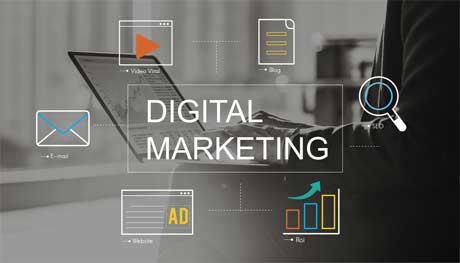At a time when a healthy online identity is one of the key ways of promoting your business and generating new revenue, your web presence is a major source of footfall in to any business. The use of digital marketing services is critical when it comes to achieving a greater customer base and enhancing footfall through your site. There are several types of digital marketing and we’ll explore some of the options, here.

Firstly, Search Engine Optimisation (SEO) is a process that aims to give your website the best chance of getting good search engine page rank. There are several factors in SEO but, arguably, two of the principal concerns are link building and keyword density. Link building refers to the process of developing substantial numbers of ‘inbound’ links to your site; hyperlinks from other websites that point to your site. Inbound links are used by the search engines as a proxy for the esteem in which your site is held by others. It may not be a perfect guide but the logic is that the more people are citing your website then the more influential and important it’s likely to be. You can build links organically by waiting for people to notice you and refer to you but in reality most people do it assertively by trading links and publishing articles that contain ‘back links’ to their site.
The issue of ‘Keyword Density’ refers to the number of times you use key terms that relate to the core focus of your business in the body of the webpage text. So for example, a website that is about baking recipes should use core terms like ‘baking’ and ‘recipes’ frequently within the text. This sounds blindingly obvious but a surprising number of webmasters will create sites that never mention the key focus of the site anywhere. The general opinion is that your keyword should make up around 5-10% of the total volume of text on the page.

Beyond SEO, another key element of digital marketing is ‘price per click’ or PPC. This refers to the use of adverts on a webpage that pay the host for a ‘click through’; a visitor clicking the advert and being funnelled through to the merchant’s site. Google Ads is probably the most prominent example of PPC where paid ads appear in the right hand column of the results page. An important and growing aspect of digital marketing is ‘social media marketing’ which involves putting out your messages through channels like Twitter, Facebook and You Tube and business blogs. This activity hopes to tap into the so called ‘viral marketing‘ phenomenon where brand, corporate influence and sales messages can propagate through populations, by people sharing Tweets and other content throughout their social networks.
Of course, all of this marketing activity comes to nought if no one buys the product, so the crux to all of this is ‘conversion rate’; the rate at which you can convert exposure into sales. Conversion Rate Optimisation aims to maximise sales and includes things like ‘funnelling’ visitors to key sales pages, keeping web pages clean and minimal and working on ensuring your webpage loads quickly.